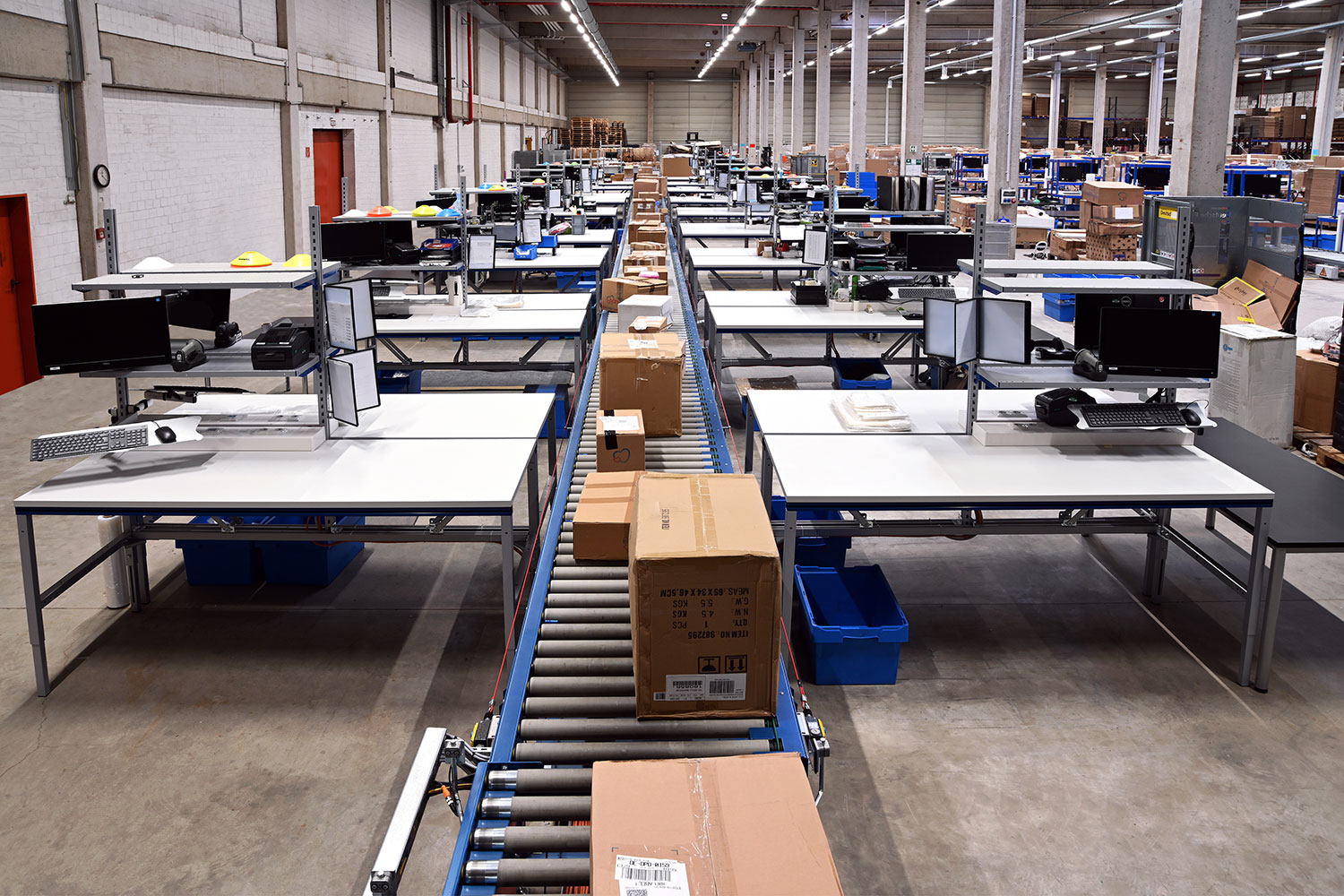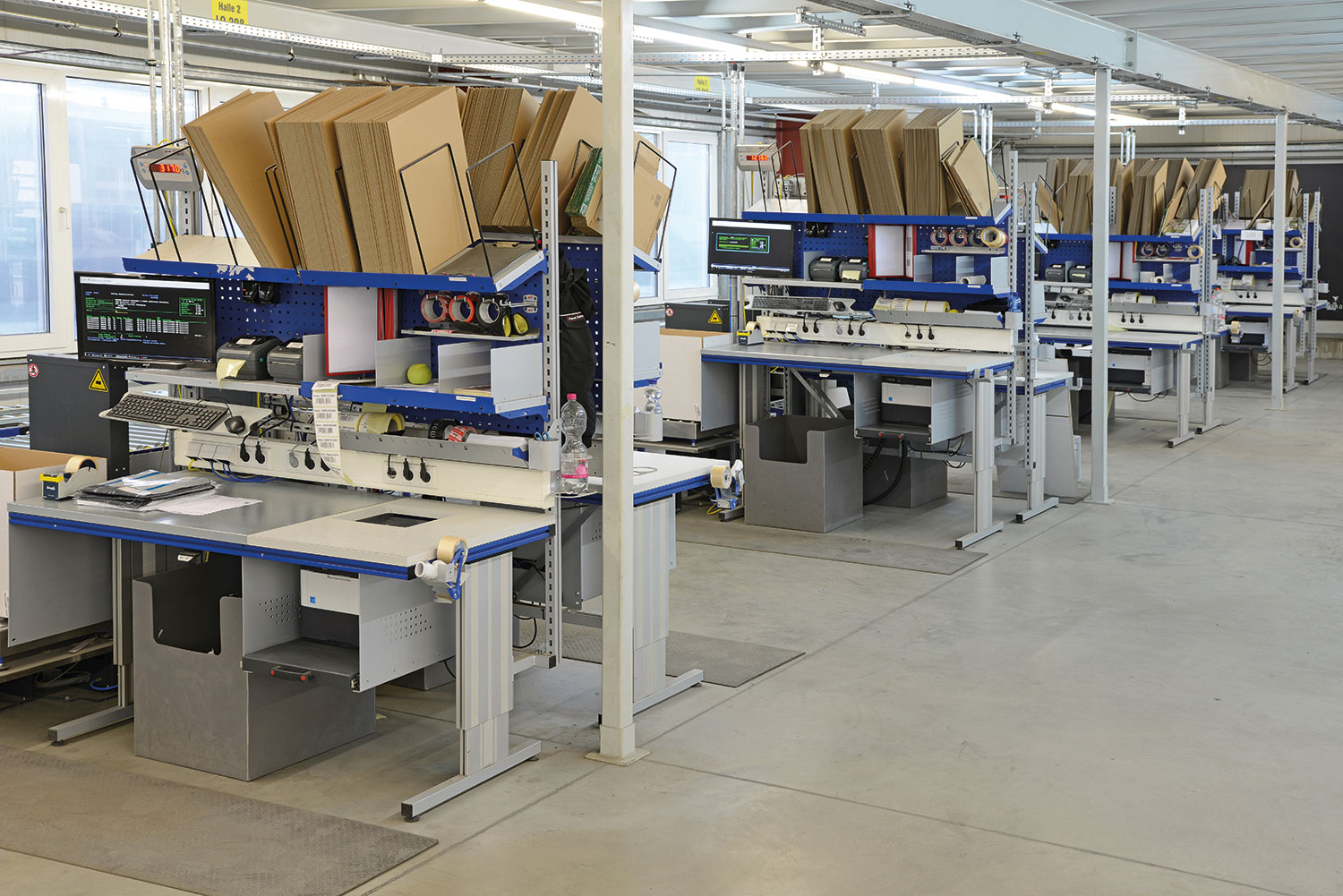
Setting up your workplace correctly: ergonomics and health
Tips

- Ergonomic workstations reduce health risks and increase productivity
- Modern analysis tools and reach space templates enable precise adaptation of the workplace.
- Customised solutions from Rocholz promote efficient, healthy workflows
- Companies benefit from reduced absenteeism and more satisfied employees.
- Ergonomic workplace design is the key to sustainable business success.
The modern workplace is no longer just a collection of furniture and technical equipment. The way in which a workplace is set up has a significant impact on the health, motivation and performance of employees.
Ergonomic concepts are in demand in companies of all sizes because they help to reduce absenteeism and increase job satisfaction. An incorrectly adjusted workstation can lead to physical complaints, a higher error rate and long-term absences.
In times of demographic change, it is crucial to design workplaces that meet the needs of all generations. Rocholz specialises in the development and implementation of ergonomic workplace solutions and demonstrates how companies can benefit in the long term by taking a holistic approach to ergonomics.
What does it mean to set up a workplace correctly?
The ergonomic design of a workplace goes far beyond simply adjusting the height of the desk or chair. In order to set up the workplace correctly, all aspects that make the working environment people-friendly must be taken into account.
This includes taking individual body measurements into account, optimising the placement of work equipment and creating an environment that reduces strain and promotes freedom of movement. Ergonomics in the workplace means combining technical, organisational and personal factors.
A properly configured workplace ensures that tasks can be performed efficiently and without unnecessary strain. This requires that work equipment be adapted to the needs of employees and that all potential risk factors be minimised. Only then can a working environment be created that supports both health and performance.
Risks associated with incorrect workplace settings
If the workplace is not set up correctly, health risks can quickly arise that are often underestimated. The most common problems include pain in the back, shoulder or neck area, caused by heavy physical work or repetitive strain.
If work equipment is not chosen appropriately or is arranged incorrectly, additional risks arise. Lack of exercise and obesity exacerbate the problem, especially in jobs that are predominantly sedentary or involve standing. Personal factors such as age or genetic predisposition can also increase the risk of complaints.
Poor nutrition, smoking and psychological stress, caused by factors such as stress or monotonous work processes, have an additional negative impact. Companies with poorly designed workplaces can expect increased absenteeism, declining productivity and higher staff turnover. These effects can be specifically avoided by ensuring that workplaces are properly designed.
In summary:
- Incorrectly adjusted workstations lead to physical complaints and frequent absences.
- In addition to physical factors, personal habits and the working environment also contribute to the risks.
- Companies are confronted with productivity losses and increased staff turnover.
Objectives of ergonomic workplace design
The primary goal of ergonomic workplace design is to protect the health of employees. A well-thought-out workplace design helps to prevent injuries and strain and reduce sick leave. At the same time, team satisfaction increases, as ergonomic workplaces promote motivation and performance.
Employees can perform their tasks without unnecessary strain, which has a positive effect on the quality of their work. Companies benefit from higher productivity, lower staff turnover and greater planning reliability. A correctly adjusted workplace is therefore a decisive factor for sustainable corporate success.
Aspects to consider when setting up your workstation correctly
Setting up the right workplace requires a combination of different factors. First and foremost, the focus is on human-centred design. Workplaces must be set up in such a way that they can be flexibly adapted to different body sizes, working methods and age groups.
This also includes taking individual limitations or health conditions into account. Particular attention should be paid to the interface between people and work equipment: tools and materials should be arranged in such a way that they can be reached without unnecessary movements.
Technical solutions, such as height-adjustable packing tables or ergonomic storage shelves, facilitate adaptation and promote smooth workflows. Digital assistance systems support employees in their tasks by helping to avoid errors and ensure that work steps are carried out correctly.
At the organisational level, varied workflows, regular breaks and clearly structured processes provide relief. Personal measures such as consciously changing your working posture or participating in ergonomic training courses round off the concept.
A combination of technical, organisational and personal measures is crucial for an ergonomically optimised workplace.
Note: Ergonomic workplace design can only be successful if all relevant factors are considered simultaneously and reviewed regularly.
Modern analysis tools for ergonomic workplace adjustment
Nowadays, a properly configured workplace is based on precise analyses and modern technologies. Companies can use smartphone or tablet-based tools to perform markerless 3D capture in real time. This technology enables quick and easy analysis of movement sequences directly at the workplace.
This method is supplemented by ComputerMyoGraphy, which uses sensors to record detailed data on the strain on muscles and joints. The data obtained is used to create a digital twin of the employee, which serves as the basis for individual adjustments.
The analysis results enable workstations to be optimised in a targeted manner and tailor-made recommendations for ergonomic improvements to be made. This allows poor posture to be detected, peak loads to be identified and the working environment to be continuously adapted to the needs of employees.
The Rocholz reach space template: ergonomics and efficiency in practice
The Rocholz reach space template is a practical tool for optimising workplaces. It is based on the DIN EN ISO 7250 standard and illustrates how tools and materials should be placed within the reach space.
The definition of zones – such as the one-handed zone, two-handed zone and extended one-handed zone – ensures that all necessary work equipment is conveniently arranged. The template also takes visibility and the field of vision into account in order to minimise physical strain and unnecessary movements.
Using the reach space template can improve health and productivity in the workplace by making work processes more efficient and less strenuous. Employees benefit from an ergonomically designed working environment that prevents discomfort and makes their daily work easier.
Advantages of the reaching space template:
- Optimal placement of work equipment within the reach area
- Reduction of unnecessary movements and strain
- Support for efficient and healthy workflows
- Easy implementation thanks to clear, practical guidelines
Ergonomic packing tables and workstation systems from Rocholz
With its SYSTEM FLEX, Rocholz offers a packing table system that is specially tailored to ergonomic requirements and has been certified by IGR e.V. This system has a modular design and can be individually adapted to the respective work processes and requirements within the company.
Height-adjustable elements allow adaptation to different body sizes and working situations. Storage surfaces, holders and tool storage are designed to provide quick access to all necessary materials and avoid unnecessary movements.
The design offers sufficient legroom and high-quality materials ensure a pleasant feel. The ergonomic workplace design with SYSTEM FLEX helps companies to set up packing and picking stations in an efficient and health-promoting manner.
Note: The right choice and configuration of workplace systems such as SYSTEM FLEX is the basis for effective and ergonomic work processes in the workplace.
Ergonomics in the workplace – many factors influence the workplace
Ergonomic workplace design means more than just the correct sitting or standing posture. Environmental factors such as noise, light exposure and indoor climate also influence well-being and performance.
The use of aids such as special work chairs or standing aids can provide additional relief. Psychosocial aspects, such as work organisation or communication within the team, also play a role.
Only when all these factors work together can a working environment be created that is healthy and productive in the long term. Companies that focus on comprehensive ergonomics not only improve working conditions, but also strengthen their position as attractive employers.
Step by step to the perfectly adjusted workplace
The path to a properly adjusted workplace begins with an analysis of the current working conditions. In the first step, work processes, movements and stresses are recorded and evaluated using modern technologies such as ComputerMyoGraphy. Based on this, experts from Rocholz develop individual concepts for improving ergonomics.
Once the recommended measures have been implemented, regular checks are carried out to verify their effectiveness and make any necessary adjustments. Throughout the entire process, Rocholz experts are on hand to advise and support companies in ensuring the health and productivity of their employees.
Note: A structured improvement process and external expertise ensure the sustainable optimisation of workplace design.
Ergonomics as an investment: benefits for companies and employees

A properly adjusted workplace is an investment in the future of the company. Optimising ergonomic conditions reduces absenteeism and keeps employees healthier and more motivated. Productivity increases as workflows run more smoothly and efficiently.
Companies benefit from greater satisfaction within the team, which also has a positive effect on employee retention. With Rocholz's support, individual solutions can be implemented for every industry. This creates a working environment that meets the requirements of the modern world of work and focuses on the health of all employees.
